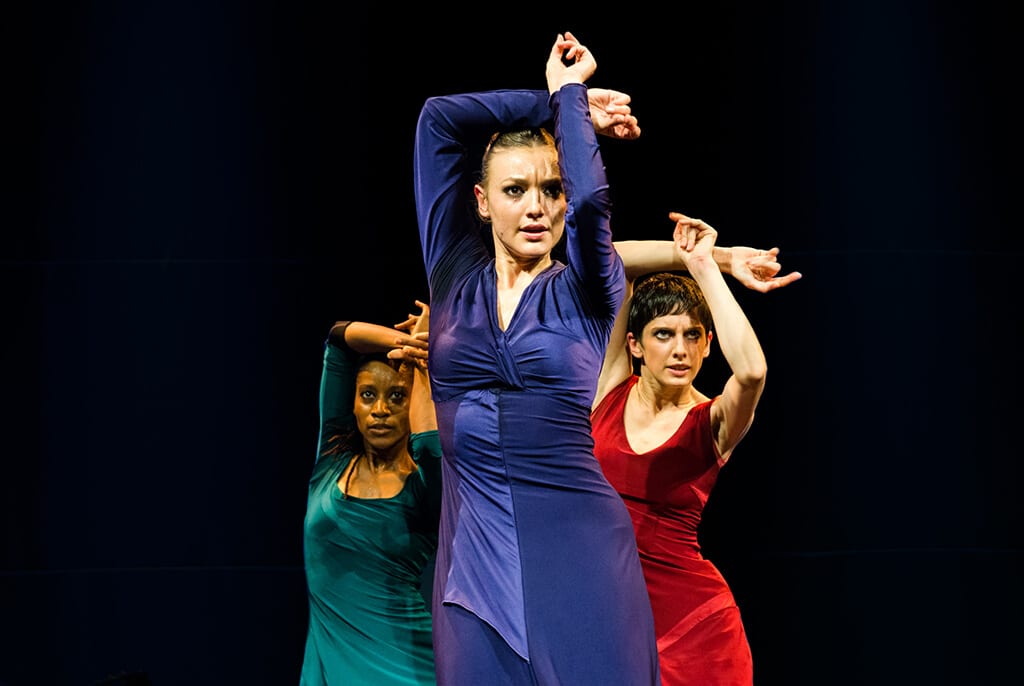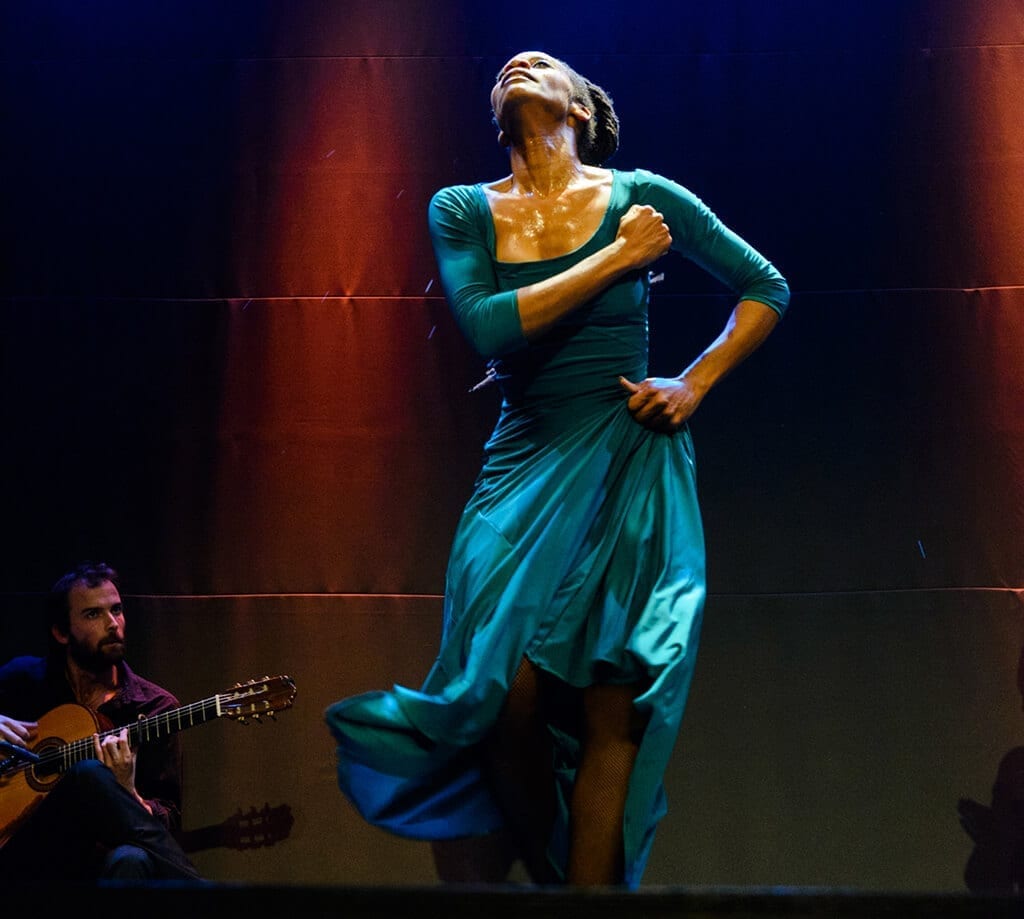The Wild Card season at Sadler’s Wells offers a chance for new dance groups to present their work alongside creative work by others that has stimulated them. Dotdotdot Dance is a group of three British women who have immersed themselves in three distinct flamenco palos, or styles. The evening comprises a dance sequence choreographed by each of these specialists interspersed with contributions from their collaborators, musical director Liam Howarth on guitar, flamenco singer Emilio Florido, cellist Colin Alexander, poet Toni Stuart, and interactive sound specialist, Yuli Levtov.
On the whole the purer flamenco sequences work better than the additional items, though all these various experiments in rhythm have something to recommend them in their own right.
Each of the danced items contains solo elements that emphasized the character of the dance interspersed with collective performance for all three dancers. Mannion’s Peterneras routine had all the grace and reserve and poise associated with that style, while Graves’ choreography had a wild dynamism more appropriate to Guajira style. Best of all was the long final sequence devised by Luz, who used all of her experience in dancing in a dress with a long train to demonstrate both the opportunities and restrictions of that format to good effect.
Each of these routines was enriched by the evocative singing and playing of Florido and Howarth, who both lent intimacy and virtuosity as needed to intensify the shifting moods. Howarth also contributed a magnificent movement of his own in the challengingly complex meter of the Bulerias tradition – very fast, and with a blizzard of shifting accents.
Flamenco at its best and most immediately communicative needs no translation of words, music, gesture or beat. The combination of vocal and musical inflections, physical gesture, and the multiple rhythms of heel, toe and instep should tell their own story – whether passionate, defiant, confiding, intimate or despairing. It’s rather like how Sondheim’s Sunday in the Park with George tells us the way pointillist dots can be used to make a complex picture – from dot to Dot. Here similarly the dancers, singer and player create intricate stories out of their own patterns of dots, whether musical notes, clapping of the hands, or beats on the ground. The imagination of the audience does the rest.
Some of the other materials that surround the central traditional flamenco core help to inform this achievement, but others do not. There is an extended metaphorical riff on the relationship with dancers and their shoes, which is charming and informative of the crucial relationship these dancers have with their footwear. Pairs of shoes are incorporated in the dances, slung across the stage with abandon, and intercut with recorded comments and asides about favourite shoes.
However, the contributions from cellist, speaker and electronic engineer add little to the total experience of the evening, for all their individual technical merits. The natural plangency of cello tone is not really needed when so much of flamenco tradition trends in that direction anyway; and only at rare points did Levtov sound manipulations add value, such as in the echoes he devised in the final section. For all of her rich vocal tone, Stuart’s extended surreal verbal interventions seemed out of place here. There is a precision about flamenco styles that seemed at variance with the random associations and suggestiveness of her contribution.
In sum, this was an evening that was at its most rewarding when focused on the traditional resources of flamenco. If some of the other items had been removed, then what turned out to be a long evening with interval could have been a more effective hour-long, unbroken show piece. That said, Dotdotdot Dance are an impressive fresh voice in the world of contemporary dance, and the event represented a significant and rewarding contribution to the Wild Card series.




